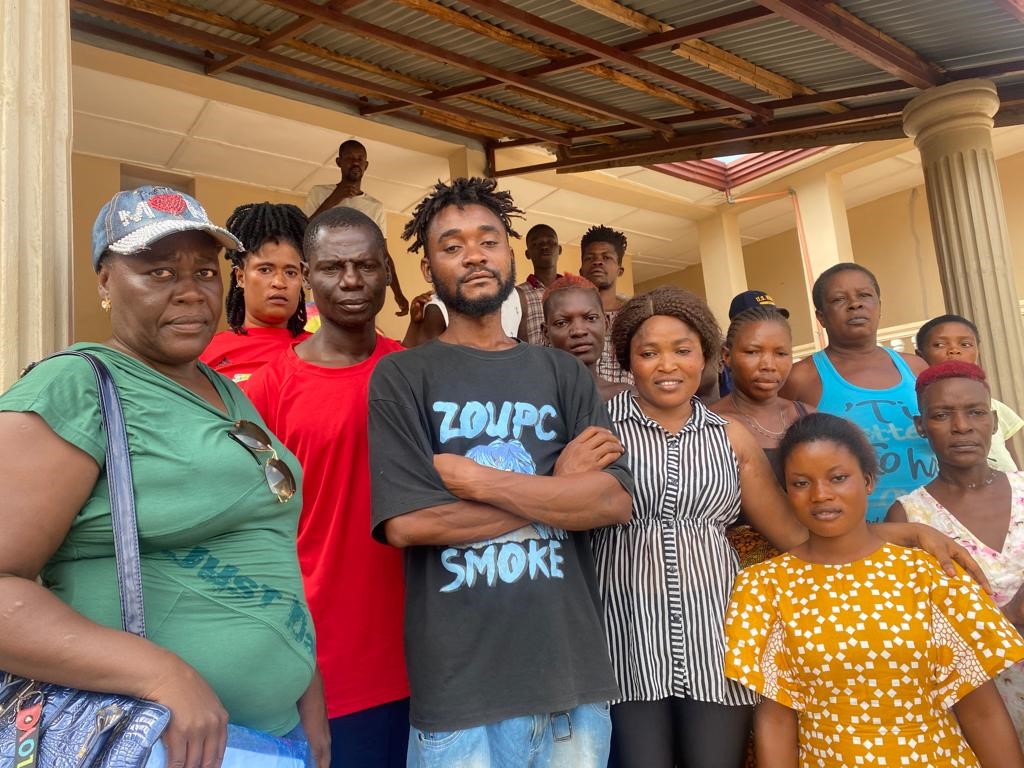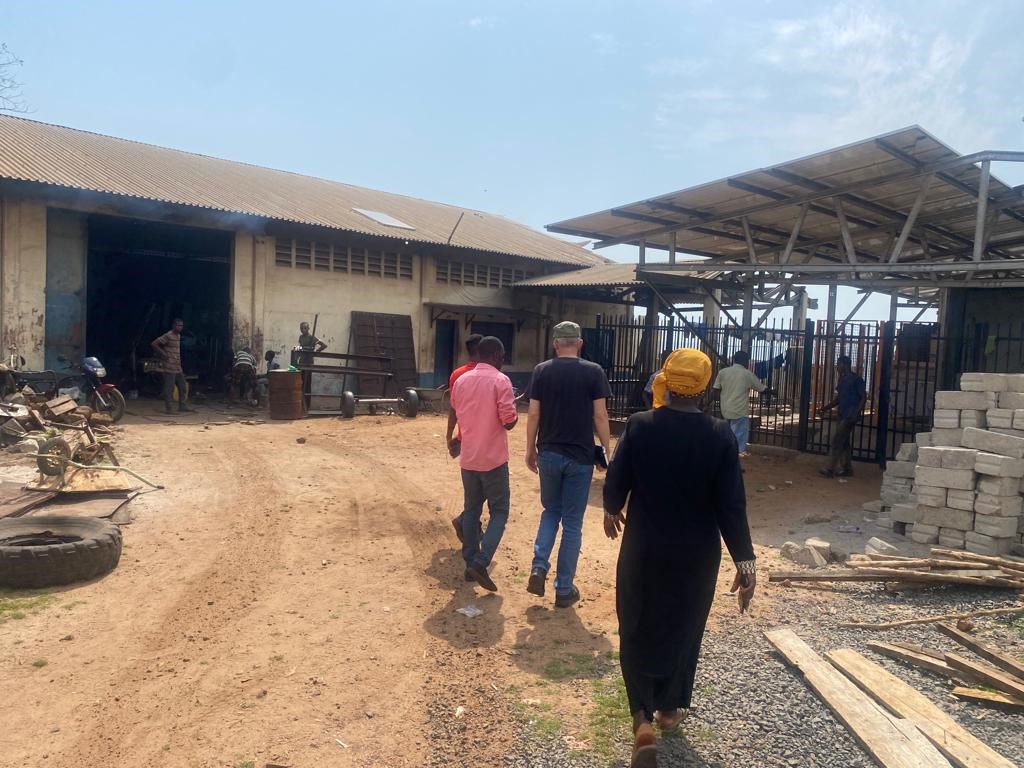Building community resilience from flooding and sand mining through UNDP’s coastal risk project, reviving alternative livelihoods
December 13, 2023

Photo showing Zainab Sheriff (Left) and other women and youth (Right) from Hamilton village who benefited various alternative livelihoods skills through the UNDP/GEF-funded Coastal Risk Project
“Today, I am an independent single mother because, through the United Nations Development Programme/Global Environment Facility funded coastal risk project, I was able to earn life skills such as hairdressing and became make-up amongst other things. I was also provided with start-up kits which enabled me to start my own business.”36-year-old Zainab Sheriff in Hamilton
Zainab is among 50 women in Hamilton who benefited from various training schemes (make-up, hairdressing, gara-tie-dying, recycling, and different arts and crafts) under the coastal risk project.
Before the coastal risk project interventions, these women earn their primary income from sand mining and considered it as their major source of livelihood. Many women and youths in these communities have lost their lives and properties due to climate-induced flooding and indiscriminate sand mining.
Trained in Village Savings and Loan Association (VSLA), these women have furthered divided themselves into two (2) groups, encouraging weekly contributions among its members which has given them a revolving fund to lend to other members with an interest rate of not more than 10%. It is interesting to know that membership in these groups is strictly based on commitment and dedication to meetings organized by the partners.
Coastal communities in Sierra Leone like Hamilton have a common challenge of waste management from their own turf as well as the plastics and debris brought by the tides. This was also why 50 youth were trained in waste management and provided with start-up kits to collect and manage domestic waste.
Predominately a trade-driven, sand mining and fishing community located in the Western Area Rural District, Hamilton’s over 700,000 residents will soon benefit from the commissioning of solar-powered cold rooms, and an ice-making machine that has been installed at Sierra Water, Goderich.
Fishing boats and equipment were donated to the women and youth groups in fishing and raised a platform constructed for fish processing activities and to boost their trade and livelihood opportunities.
As a result of these interventions and the new alternative livelihood opportunities brought by the UNDP/GEF-funded interventions through the coastal risk project, Hamilton and its surrounding communities are taking steps to revert their losses by adopting best practices and exploring alternatives livelihoods opportunities.
Today, sand mining activities within Hamilton communities are also now regulated by community bylaws instituted by the stakeholders.

Photo showing UNDP staff and consultants together with community residents in Tombo during a joint monitoring visit
Thanks to UNDP’s partnership model, it also found enablers by collaborating with the Government of Sierra Leone through various line ministries such as Tourism, Environment, and Fisheries leading ground-level implementation of the GEF Funded project in these communities.
The coastal risk project targets Sierra Leone’s coastal zone, in six different pilot sites (Conakry Dee, Lakka, Hamilton, Tombo, Shenge, and Turtle Island) aiming to utilize solutions developed at national and sub-national levels for sustainable management of natural resources, ecosystem services, chemicals, and waste. This project is scaling up action on climate change adaptation and mitigation across sectors to help the Government of Sierra Leone (GoSL) to become more climate resilient while contributing towards achieving Sustainable Development Goals (SDGs).

 Locations
Locations


